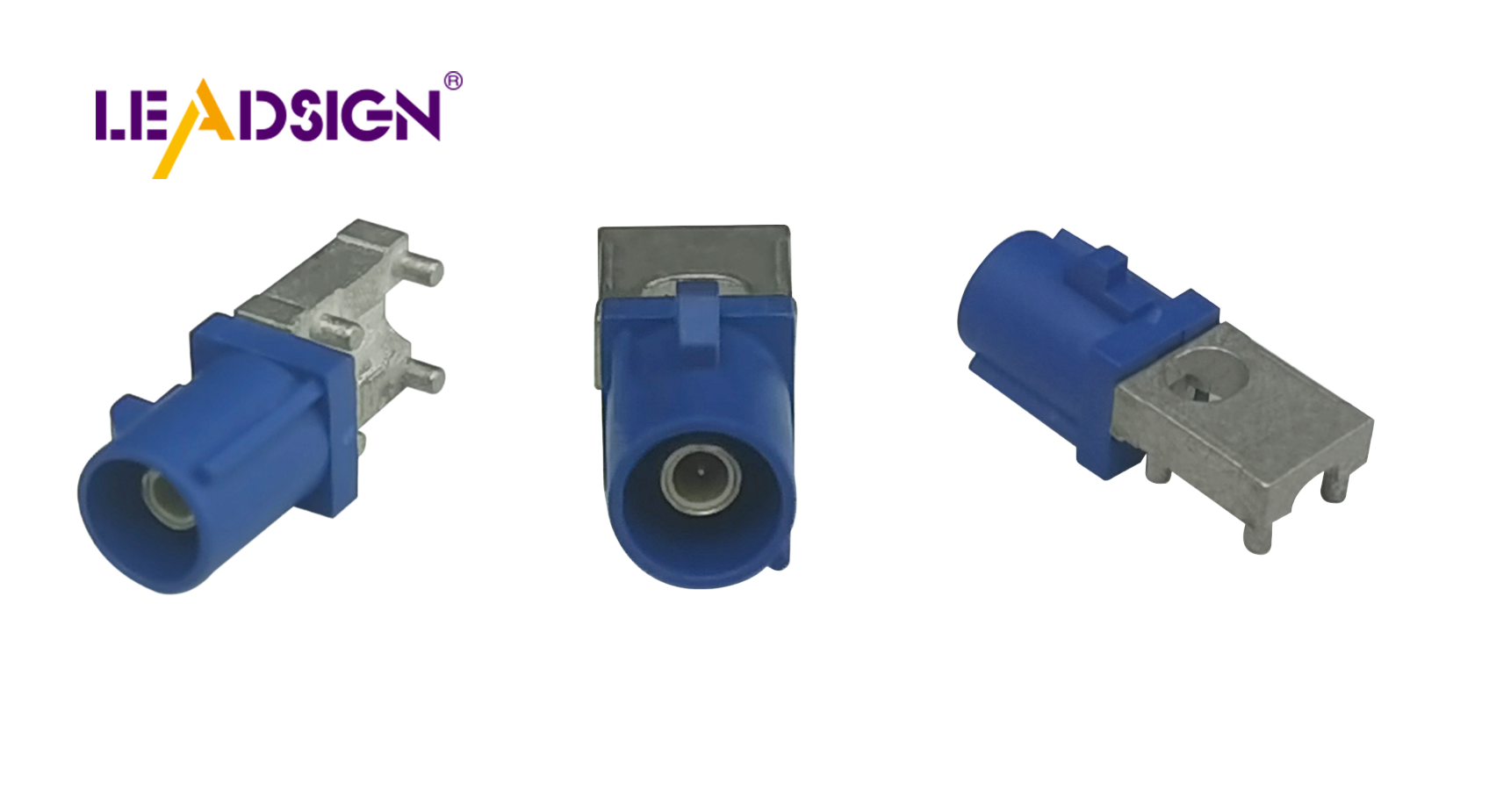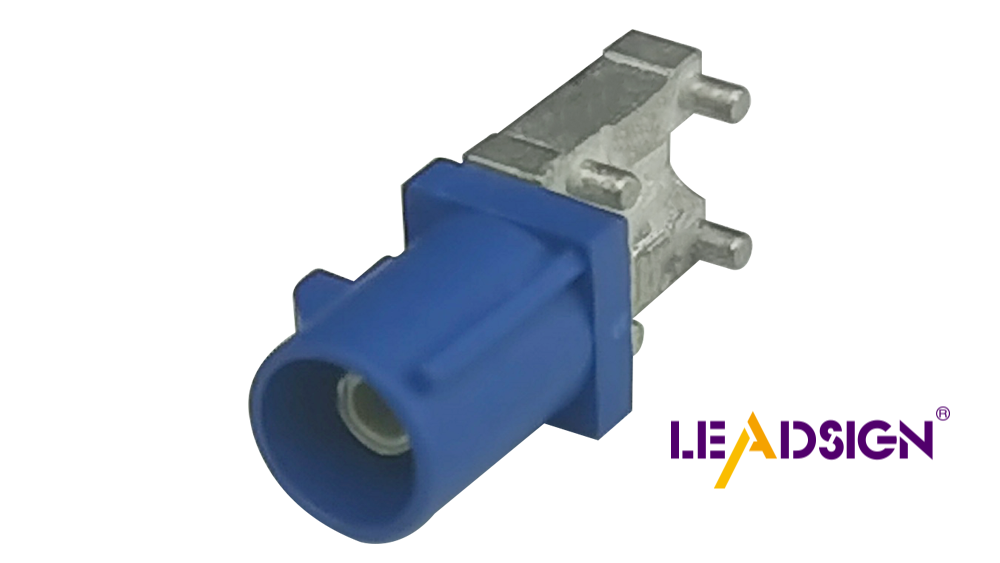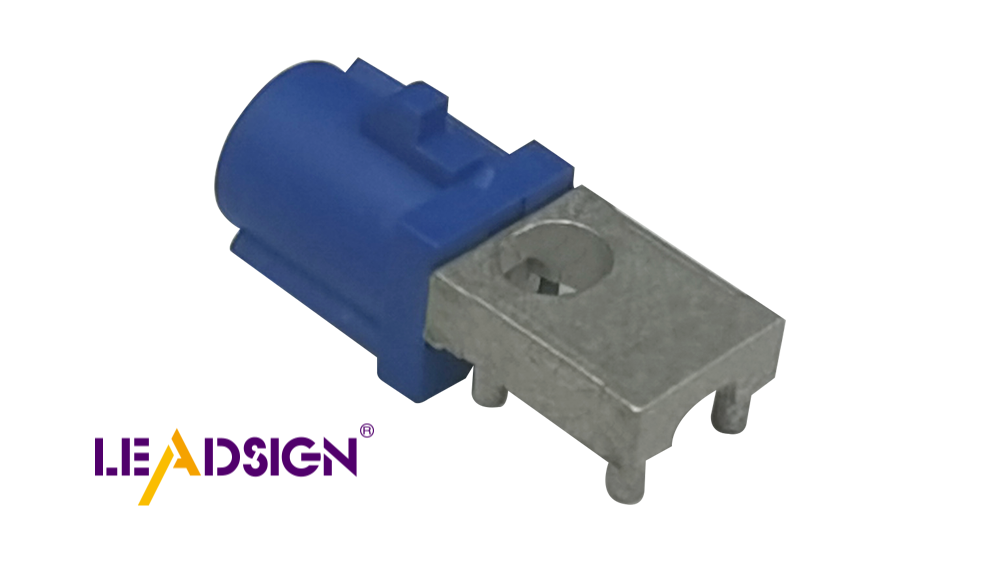FAKRA Connector Types Compared to Types of Wire Connectors Automotive Systems Use

In cars, strong and reliable connections are very important. FAKRA connector types are great for this purpose. They are made for high-frequency uses in vehicles. These connectors work well in GPS, satellite radios, and telematics systems. Their small size, color-coded parts, and secure locks make them essential. They meet the tough needs of the car industry easily. FAKRA connectors give steady performance and are very dependable. They are now a key part of car communication systems.
Key Takeaways
FAKRA connectors are essential for modern vehicles, providing reliable connections for high-frequency applications like GPS and telematics.
Their color-coded design simplifies installation and reduces the risk of errors, making them user-friendly for mechanics and technicians.
With a temperature tolerance of -40°C to +105°C, FAKRA connectors are built to withstand harsh automotive environments, ensuring long-lasting performance.
The secure locking mechanism of FAKRA connectors prevents accidental disconnections, enhancing the reliability of critical car systems.
While FAKRA connectors excel in high-frequency tasks, simpler connectors like blade and spade types may be more cost-effective for basic applications.
Understanding the specific uses and limitations of different connector types helps in selecting the right one for your automotive needs.
FAKRA connectors are designed to meet strict automotive standards, ensuring safety and compatibility in vehicle systems.
What Are FAKRA Connectors?

Definition and Purpose
These connectors handle FAKRA connectors, which is important for modern cars.
The main job of help different car systems talk to each other smoothly.
Key Features of FAKRA Connectors
FAKRA connectors have many features that make them great for cars:
Color-Coded Design: Each connector has its own color and code. This stops mix-ups and helps you find the right spot easily.
High-Frequency Capability: They work with frequencies up to 6 GHz. This makes them perfect for things like telematics and entertainment systems.
Durability: These connectors are tough and made from good materials. They don’t break easily, even in very hot or cold weather (-40°C to +105°C).
Secure Locking Mechanism: Two locks keep the connector tight so it won’t come loose by accident.
Compact Design: Their small size saves space as cars get smaller but more advanced.
Compliance with Standards: They meet strict car industry rules, making them safe and reliable.
These features make FAKRA connectors very important for today’s car technology. Whether it’s navigation, radio antennas, or driver-assist tools, they give you the strong performance needed every time.
Types of Wire Connectors in Automotive Systems

In car systems, wire connectors are very important. They help keep electrical connections strong and reliable. Each type has its own job, so it’s good to know their uses.
Blade Connectors
Blade connectors are flat and rectangular in shape. They are used in fuse boxes and wiring setups in cars. The flat metal part fits tightly into a matching slot. This makes the connection stable and secure. These connectors are simple to use and quick to assemble or take apart, which helps during car repairs.
Main benefits of blade connectors:
Easy to Use: No special tools needed for connecting or disconnecting.
Works Everywhere: Suitable for both low and high-voltage tasks.
Strong Design: Holds firmly, avoiding loose connections.
Blade connectors are popular because they are easy and dependable.
Spade Connectors
Spade connectors, also called spade terminals, have a spade-like metal end. They attach wires to screws or fixed points easily. Their open design lets you slide them under screws without removing them fully, saving time during setup.
Why spade connectors are useful:
Quick to Use: Easy to remove or reconnect without unscrewing completely.
Stays Tight: Once secured, they hold well for a steady connection.
Used Often: Found in lights, batteries, and control systems in cars.
Spade connectors work best where regular adjustments are needed.
Ring Connectors
Ring connectors have a circular shape that fits over screws or bolts. They make strong connections that stay secure even with movement or vibrations. These are great for grounding wires and battery terminals.
Key features of ring connectors:
Very Reliable: Won’t disconnect by accident due to their closed-loop design.
Handles Power Well: Can carry high currents for heavy-duty jobs.
Weather-Proof: Good for outdoor car parts because they’re tough.
Ring connectors help keep important systems working smoothly in tough conditions.
Other Connector Types
In cars, different connectors keep electrical systems working well. Each type has a special job, so knowing their uses is important.
Crimp Connectors
Crimp connectors are common in vehicles for strong connections. You attach them by squeezing them onto wires tightly. This makes a solid bond that lasts long and works well. They come in many sizes and shapes, fitting various car systems.
Main benefits of crimp connectors:
Reliable: They stay connected even with shaking or movement.
Simple to Use: Easy to install using crimping tools.
Flexible: Useful for both small and large power needs.
These connectors are often used in lights, sensors, and power units.
Bullet Connectors
Bullet connectors have two parts that snap together like a plug. They are perfect when you need to connect and disconnect wires often. Their design keeps them tightly joined without slipping apart.
Why bullet connectors are helpful:
Easy to Use: Quick to put together or take apart.
Strong Hold: The plug design keeps the connection secure.
Where Used: Found in car audio systems and wire setups.
If you need frequent changes, bullet connectors work best.
Round Connectors
Round connectors are tough and flexible for hard conditions. Their round shape makes them great for moving parts or outdoor use. These are often found in outside lights or other external car parts.
What makes round connectors good:
Weather-Proof: Work well even in bad weather.
Can Rotate: Perfect for parts that turn or move around.
Long-lasting: Made to handle wear over time.
Round connectors help important systems like outside lights work no matter the weather.
Knowing these connector types helps you pick the right one for your car's needs. Each type is key to keeping vehicle systems safe and efficient.
Comparison of FAKRA Connectors to Other Connector Types
Design and Structure
FAKRA connectors are different from other car connectors. They are small, strong, and perfect for tight spaces in modern cars. Their color-coded design helps you match the right parts easily. This reduces mistakes when setting them up.
Other connectors like blade or spade ones are simpler. Blade connectors use flat metal pieces to join wires. Spade connectors have a fork shape that attaches wires to screws. These designs work but lack the advanced features of FAKRA connectors. Bullet connectors snap together securely but don’t handle high-frequency signals like FAKRA.
The strength of FAKRA is in its ability to manage signals up to 6 GHz. This comes from its SMB connector base, which ensures steady coaxial connections. Its double-locking system keeps it secure even in tough car conditions.
Performance and Reliability
FAKRA connector types perform well in tough situations, especially with high-frequency tasks. They keep signals clear even in extreme temperatures from -40°C to +105°C. This makes them great for GPS, telematics, and entertainment systems in cars. The locking system stops accidental disconnections, ensuring steady performance over time.
Other connectors like ring or bullet ones do specific jobs well but aren’t as versatile as FAKRA connectors. Ring connectors are reliable for grounding and heavy power use but can’t handle high-frequency signals. Bullet connectors are good for quick disconnections, such as in audio systems, but lack the signal clarity of FAKRA.
By following strict car industry rules, FAKRA connectors ensure safety and long-lasting performance. This makes them a top choice for today’s vehicles.
Applications
The uses of FAKRA connector types show why they’re so important for cars today. They’re made for high-frequency tasks like GPS antennas, telematics systems, and driver-assist tools (ADAS). Their ability to carry fast data while keeping signals clear makes them key for modern car communication systems.
Other types of connectors have more basic uses. Blade connectors work in fuse boxes and wiring setups; spade ones connect lights or batteries; ring ones ground wires; bullet ones help with audio systems because they’re easy to use. While these all work well where needed, they don’t match the flexibility or signal abilities of FAKRA connectors.
The flexibility of FAKRA also means it fits many car needs perfectly—like infotainment systems or wireless entry setups—while saving space with its small size.
Advantages of FAKRA Connectors
Key Benefits
FAKRA connectors have many benefits for modern cars. They are designed to meet the needs of today’s vehicles and ensure they work well.
High-Frequency Capability
FAKRA connectors can handle signals up to 6 GHz. This makes them perfect for GPS, telematics, and car entertainment systems. They keep signals clear and steady for important communication tasks.Secure and Reliable Connections
These connectors lock tightly to stop accidental disconnections. Even in tough conditions like shaking or extreme heat, they stay connected. You can count on them to work over time without failing.Color-Coded Design
Each connector has its own color and code system. This helps you match parts correctly during installation or repairs. It saves time and avoids mistakes when setting things up.Compact and Space-Saving Structure
FAKRA connectors are small but powerful, fitting into tight spaces in cars. Their size helps save space while still working efficiently in complex systems.Durability and Longevity
These connectors are made to last in harsh conditions, from -40°C to +105°C. Their strong build ensures they perform well even in rough environments.Ease of Installation and Maintenance
The simple design makes them easy to install or fix when needed. Their coding system also helps reduce errors during assembly or upgrades.Compliance with Automotive Standards
FAKRA connectors follow strict car industry rules for safety and compatibility. This makes them a reliable choice for both manufacturers and mechanics.
Because of these features, FAKRA connectors are now vital in cars today. Whether it’s telematics, infotainment, or driver-assist tools, they provide the performance needed every time.
Limits of FAKRA Connectors
Downsides
Even though FAKRA connectors are great, they have some limits. Knowing these helps you pick the right connector for your needs.
Made for High-Frequency Jobs
FAKRA connectors work best with GPS, telematics, and infotainment systems. For simple or low-frequency tasks, they might be too advanced. Easier options could be better in those cases.Not Always Useful Outside Cars
These connectors follow car industry rules like FAKRA and USCAR. This makes them reliable in cars but less useful elsewhere. If you need connectors for other fields, finding compatible ones may be harder.More Expensive Than Basic Types
Because of their special design, FAKRA connectors cost more than simpler ones. For basic jobs that don’t need high-tech features, cheaper options like blade or spade connectors might work better.Tricky to Install Without Practice
Setting up FAKRA connectors needs careful alignment and locking to work well. The color codes help but still require focus during installation. If you’re new to them, it may take extra time compared to simpler types.Limited Times You Can Connect Them
While strong, FAKRA connectors can only handle about 25 connections before wearing out. If your project needs frequent plugging and unplugging, other types with longer lifespans might suit better.
By knowing these downsides, you can decide if they fit your project’s needs well.
FAKRA connectors are special because of their unique features. They handle high-frequency signals, lock securely, and have color codes. These traits make them important for modern car systems. Unlike other wire connectors, they are better in design and performance. Their small size and toughness keep connections strong in tough conditions.
Use FAKRA connectors for tasks needing high-frequency signals like GPS or telematics. They also work well in car entertainment systems. As cars become more advanced, these connectors help new technologies work smoothly. They ensure clear communication and last a long time in vehicles.
FAQ
What do FAKRA connectors do in cars?
FAKRA connectors help connect important car systems. They link GPS, radios, telematics, and entertainment devices. These connectors keep signals clear even in tough conditions. Their design makes them great for high-frequency tasks in cars.
How are FAKRA connectors different from other car connectors?
FAKRA connectors are small and have secure locks and color codes. Unlike blade or spade types, they handle signals up to 6 GHz. They stay strong in extreme heat, cold, or vibrations. This makes them perfect for advanced car systems.
What kinds of FAKRA connectors exist?
FAKRA connectors come in different types for various uses. There are single-cavity, three-cavity, and eight-cavity versions. Each type connects one or more systems as needed. This variety helps fit many car setups.
Why do FAKRA connectors use colors?
The colors on FAKRA connectors stop mix-ups during setup. Each color shows what the connector is used for. This makes it easier to match parts correctly and faster to install them.
Can FAKRA connectors handle harsh conditions?
Yes, these connectors work well in bad environments. They can handle temperatures from -40°C to +105°C easily. They resist shaking, moisture, and other challenges while staying reliable.
Are FAKRA connectors simple to set up?
FAKRA connectors are easy to install because of their design. Their small size and color coding make setup quick and simple. The locking system keeps connections tight with fewer mistakes.
What’s special about three-cavity FAKRA connectors?
Three-cavity types connect multiple systems at once without taking much space. They give strong connections while saving room in complex car setups.
How do FAKRA connectors help with communication in cars?
These connectors let car systems share information smoothly by carrying clear signals fast. They support GPS, telematics, and entertainment tools without interference.
Can you reuse FAKRA connectors often?
You can reuse them but only about 25 times before they wear out. Avoid unplugging them too much if you want them to last longer.
Do FAKRA connectors work outside of cars?
They’re mainly made for cars following strict rules for safety and performance. While they might work elsewhere sometimes, other fields may need different connector designs.
See Also
Why Fakra Connectors Are Essential for Cars Today
Fakra Automotive Connectors: A Key Component in Vehicles
Understanding the Role of FAKRA Connectors in Cars

